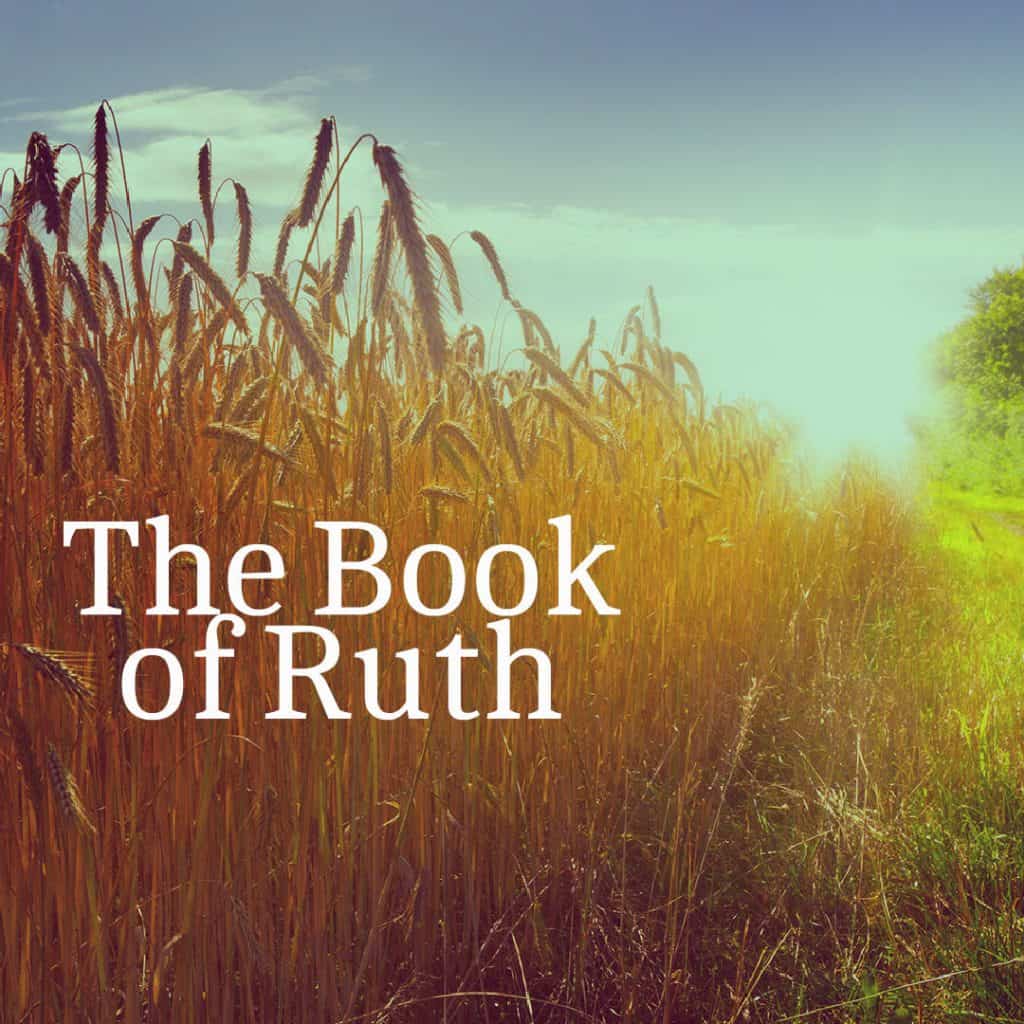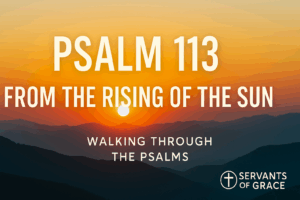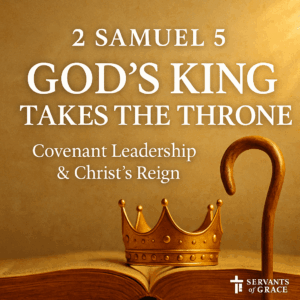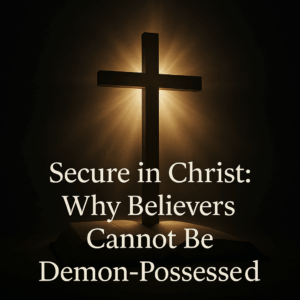⏱️ Estimated Reading Time: 11 min read
In this post, we will begin our journey through Ruth, first examining Ruth 1:1-5. We will be utilizing the Complete Jewish Bible translation.
Ruth 1:1-5, “1 Back in the days when the judges were judging, at a time when there was a famine in the land, a certain man from Beit-Lechem went to live in the territory of Mo’av – he, his wife and his two sons. 2 The man’s name was Elimelekh, his wife’s name was Na’omi, and his two sons were named Machlon and Kilyon; they were Efratim from Beit-Lechem in Y’hudah. They arrived in the plain of Mo’av and settled there. 3 Elimelekh, Na’omi’s husband, died; and she was left, she and her two sons. 4 They took wives for themselves from the women of Mo’av; the name of the one was ‘Orpah; and the name of the other was Rut. They lived there for about ten years. 5 Then Machlon and Kilyon died, both of them; and the woman was left with neither her two sons nor her husband.”
Commentary:
Ruth 1:1, “1 Back in the days when the judges were judging, at a time when there was a famine in the land, a certain man from Beit-Lechem went to live in the territory of Mo’av – he, his wife and his two sons.”
This first passage of Ruth notes the time period this book takes place during, specifically the period of the Judges. As we noted in our previous post, scholars estimate the period of the judges to have been from between the late 1300s B.C. and the mid-1000s B.C. There was a famine in the land, forcing Elimelekh to depart his hometown of Bethlehem and to journey to the neighboring land of Moab.
There are a couple of things to note that are quite interesting, most notably concerning the meaning of name of city of Bethlehem. Bethlehem means “House of Bread” so it is rather interesting that a famine was occurring in a town known as the “House of Bread.” Furthermore, we can venture a guess that a famine in the land likely meant God was judging His people for some degree of disobedience. Remember that during the period of the Judges; Israel was in a continual state of being obedient for a time and then turning to the worship of false idols. When they turned away from God, in keeping with His covenant with Israel, God punished the people, usually through the means of an outside oppressor. When the people would cry out to God, He would send a judge to deliver the people from bondage which would result in a time of relative peace and a refocus on worshiping God. Unfortunately, the people often slipped back into idolatry with the cycle of oppression and deliverance continuing for a couple of hundred years up until the time of Samuel and the establishment of the Israelite monarchy with King Saul.
- A. Verhoff notes concerning the movement of Elimelech and his family from Bethlehem to Moab that “The possibility of an Israelite family sojourning in otherwise hostile Moab is due probably to the fact that enmity between the two nations did not exclude the friendly intercourse of individuals, or perchance there was a friendly relationship between the two nations at this time.”[1] Furthermore, one can likely ascertain it was not the intention of Elimelech to plant permanent roots in Moab. The Hebrew word gur used in some translations of Ruth 1:1 connotes the idea of sojourning or to dwell for a time, in this case until the famine had passed in Bethlehem.
Ruth 1:2, “The man’s name was Elimelekh, his wife’s name was Na’omi, and his two sons were named Machlon and Kilyon; they were Efratim from Beit-Lechem in Y’hudah. They arrived in the plain of Mo’av and settled there.”
One interesting element one can discover when digging into Scripture is that of the meanings of individual’s names. In the ANE, the name was given to someone or something most often referenced something of importance. For instance, we find throughout the Old Testament an individual naming a place something because of what happened there. An example of this is Genesis 35:15 which states “Ya‘akov called the place where God spoke with him Beit-El.” As we look at Ruth 1:2, it is important to stop and notice the meanings of the individual’s names. Elimelekh means “God is my King” and is formed from the words “el” meaning “god” and “melech” meaning “king.” Na’omi means “my delight.” Now things get much stranger as we look at the meanings of the names of the two sons. Machlon means “sick, ” and Kilyon means “pining or wasting away.” As we look at the next few verses, those meanings will come into play.
In this passage, we find Elimelekh journeying from Beit-Lechem to Mo’av with his wife Na’omi and their two sons Machlon and Kilyon. Upon arriving in Mo’av, they settled there. Daniel Block notes in regards to this journey to Mo’av that Elimelekh the focus of attention in the first two verses of Ruth. “He is the one who leaves (halak min, lit. “to go from”) Bethlehem of Judah to live for a while (gur, “to sojourn”) in the field of Moab, and he is the one who comes to (bo’, “to enter”) the field of Moab and lives (haya, “to be”) there. The syntax of these two verses suggests that the initiative for the trip to Moab was Elimelech’s and the participation of his wife and sons a secondary issue. The thematic links with the story of Abraham, particularly Gen. 12:10, reinforce this interpretation, leading the reader to expect an Abraham-like character. Naomi and the sons are presented as tagalongs.”[2]
One final note concerning verse two is the description of the place where they traveled as the “plain of Mo’av.” Block provides some insight into what this might mean commenting “His (Elimelekh) destination is identified specifically twice as sadeh mo’av, the “field of Moab.” Since national territory is usually referred to as the eres, “land”, of a nation, one would have expected Elimelekh to head for eres mo’av, “the land of Moab”, a form found elsewhere in the Old Testament. Fundamentally, sadeh refers to land as a field that has been wrested from an original wild state and brought under human occupation and cultivation. Specifically it may refer to unoccupied territory, in contrast to mosab, “inhabited land”; the region surrounding a city, in contrast to ir, “walled town”; or a field, in contrast to bayit, “house.” Although elsewhere sadeh only rarely denotes a tribal or national territory, in at least five instances sadeh mo’av functions as an alternate to eres mo’av, “land of Moab.” The present author’s preference for the former may have arisen from the book’s focus on the fields to be harvested and Boaz’s efforts to redeem the “field” of Naomi.”[3]
Ruth 1:3, “Elimelekh, Na’omi’s husband, died; and she was left, she and her two sons.
4 They took wives for themselves from the women of Mo’av; the name of the one was ‘Orpah; and the name of the other was Rut. They lived there for about ten years.”
In verse three we find Na’omi left alone in Mo’av with her two sons following the death of Elimelekh. Nothing in the text indicates how long the family sojourned in Mo’av prior to Elimelekh dying. However, F. B. Huey states that a “later Rabbinic tradition says he was punished because of greed or because he forsook his homeland.”[4] Again, we are not told specifically the nature of Elimelekh’s passing as the text begins to shift from Elimelekh to Naomi and her two sons.
Following the death of their father although we are uncertain as to how long after his death, Machlon and Kilyon marry two Moabite women, ‘Orpah and Ruth. Before we examine the issues behind the marrying of these two women, let’s once again take the time to look at the meaning of their names. ‘Orpah means “gazelle” which interestingly has its roots from the word oreph which means stiff of neck, obstinate. Ruth means “friendship.” As with the names of the two sons, we shall see how these meanings play out in the overall story a bit later.
- A. Verhoef states concerning the marrying of these Moabite women that “Marriage with a Moabite wife was not definitely forbidden in Israel, although union with the women of Canaan was (Deut. 7:3-4). Such marriage, however, was contrary to the spirit of the law because the Moabites were idolators and were not allowed in the congregation of the Lord.”[5] So rather than returning to their homeland, the two sons decide to lengthen their stay in Mo’av by marrying foreign women, a typical sign in the Old Testament of moving away from God and His commands.
Ruth 1:5, “Then Machlon and Kilyon died, both of them; and the woman was left with neither her two sons nor her husband.”
The next event described by the author is the death of Machlon and Kilyon. It is difficult to ascertain from the text whether the sons were married to ‘Orpah and Ruth for ten years or whether they lived in Mo’av for ten years prior to their death. Nevertheless, both sons died leaving their wives with no children, alone to fend for themselves in a foreign land. In our modern understanding, the idea of women not having a husband to take care of them might not seem like such an ordeal. In the ANE, such an ordeal had potentially devastating repercussions. K. Lawson Younger aptly notes, “The family of Elimelech teeters on annihilation. Thus, while the threat of starvation plays a large role in the story, it is only secondary to the problem of the family’s survival. In ancient Israel, the loss of a family from existence was a great tragedy. When a family died out physically, it ceased to exist metaphysically. That robbed Israel of one her most prized possessions, namely, clan and tribal solidarity.”[6] Furthermore, the situation is even more critical. Lawson further notes, “As a widow, Naomi lacks the provision and protection of a husband in the male-dominated ancient Near East. Moreover, it must be remembered that she lives in a foreign land. Because of her age and poverty, she is effectively cut off from the three options that might normally be open to a widow:
- There was the possibility of returning to the house of her father. But her parents are most likely already dead. If the disaster had come earlier in life, she could have returned to her father’s house like an ordinary young widow. But this is not the case here.
2. There was the possibility of remarriage, perhaps even a levirate marriage (Deut. 26:5-10). But this seems to be out of the question since she is beyond child-bearing years.
3. There was the possibility of supporting herself through some kind of craft or trade. But this is unlikely since she has none (the vast majority of women in antiquity did not have such an option.)”[7]
We also must note that both ‘Orpah and Ruth were both barren meaning there was no progeny that might be of some assistance either at that present time or later in life. Block notes an interesting element of the text stating “the designation of the sons as yeladim, “children,” rather than the conventional banim, “sons”…creates an inclusion with hayyeled in 4:16 and highlights the issue of progeny as a key theme in the book.”[8]
Conclusion:
Ruth 1:1-5 provides the reader with a quick background on the main characters of Ruth. Led by Elimelekh the family moves from Beit-Lechem to the plain of Mo’av to escape the famine. In the process, Elimelekh dies, his two sons, Machlon and Kilyon, marry the Moabite women ‘Orpah and Ruth, with the two sons dying leaving Na’omi, ‘Orpah, and Ruth to fend for themselves. It seems as if tragedy will befall these women and all hope will be lost with the theme of progeny and redemption possibly left hanging in the balance. Like any good story, this cliffhanger of sorts leaves the reader wondering what will happen next. In our next segment, we will look at Ruth 1:6-14.
References
[1] P. A. Verhoff. “Commentary on Ruth” in The Biblical Expositor, Vol. I: Genesis through Esther. Edited by Carl F. H. Henry. Grand Rapids: Baker Book House, 264.
[2] Daniel Block, The New American Commentary: Judges-Ruth (Nashville: B&H Publishing Group, 1999), 625-626.
[3] Ibid., 626.
[4] F. B. Huey, Jr. “Commentary on Ruth” in The Expositor’s Bible Commentary, Vol.3: Deuteronomy through 1&2 Samuel. Edited by Frank Gaebelein. Grand Rapids: Zondervan, 520.
[5] P. A Verhoef. “Commentary on Ruth” in The Biblical Expositor Commentary, Vol.I: Genesis to Esther. Edited by Carl F. H. Henry. Grand Rapids: Baker Book House, 264.
[6] K. Lawson Younger, NIV Application Commentary: Judges-Ruth (Grand Rapids: Zondervan, 2002), 417.
[7] Ibid., 417-418.
[8] Block, 629.




